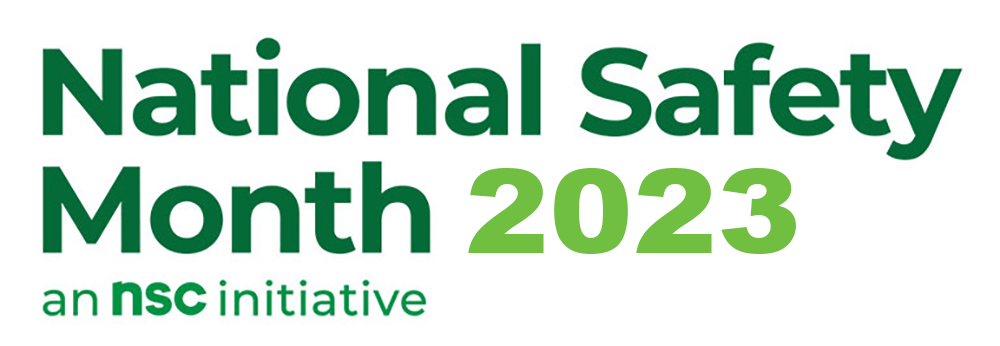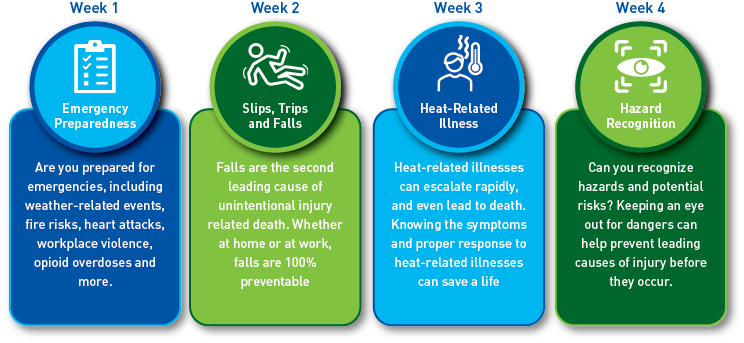
During the month of June, the U.S. recognizes National Safety Month by calling attention to workplace safety. In addition to our emphasis on safety topics specific to Mauser Packaging Solutions, we join with other companies across the U.S. by focusing on weekly topics provided by the National Safety Council.
National Safety Month – Week One - Emergency Preparedness
An Emergency Action Plan (EAP) is a written guide to follow in the event of foreseeable emergencies to help protect people from serious injury, to minimize property damage, and prevent loss of life. While we work hard to prevent emergencies from happening in the first place, prevention may beyond our control, so our only option is to be prepared to deal with them when they come. In addition to minimizing damage, history has shown that companies with good Emergency Action Plans generally recover much quicker than those that do not.
It is Mauser Packaging Solutions' responsibility to develop an EAP tailored for each facility, which in simplest terms means anticipating the things that can go wrong and then developing a strategy to deal with them. The plan, however, is only as good as its execution and success depends on everyone knowing and following the plan. Everyone has an important role to ensure emergencies are handled quickly and efficiently. Some may be assigned specific tasks according to the plan, but for others the most important action will be to follow directions.
How can you practice Emergency Preparedness?
- Review your facility’s Emergency Action Plan
All employees should know where the Emergency Action Plan is kept and where to find important details such as emergency telephone numbers, emergency equipment, evacuation maps and procedures, and emergency shelter areas. Ask a supervisor or manager if you are not sure what you are expected to do during a specific emergency. - Know the signals
Different emergencies usually call for different response actions. For instance, in some cases an orderly building evacuation is needed, such as in the event of a fire. There may be other times when it is safer to seek shelter inside the building such as during a tornado warning or a civil disturbance. It is important that everyone recognizes alarm signals and knows how management will provide necessary information and direction during an emergency. - Know who to contact
The EAP should designate who to contact during an emergency but when in doubt, call 9-1-1. Additionall,the EAP should designate who is responsible for making notifications in case of an emergency, but all employees should know who the proper contacts. Never assume that someone else has made the proper notifications. Follow up and verify that notification has been made. Long delays in response to an emergency are often caused by everyone assuming someone else has made the proper notifications. - Know where emergency equipment is located and how to use it
Know where emergency equipment is located, such as portable fire extinguishers, emergency eyewash fountains, emergency spill kits, first aid kits, AEDs and emergency shut offs. Ensure that you know how to use emergency equipment – ask for training or instruction if needed. Make it a point to regularly check on these items to ensure they are not blocked and are in good operating condition. Report anything that looks out of place, missing, or not in operable condition. - Maintain an organized workspace
Aisle and floors should be always clear of material and debris so that egress routes are free from hazards in the event of an emergency. Never block emergency exits or equipment. Report locked doors, broken door hardware, burned out lights or anything else that could hinder escape.
Heightened emotions and limited available information during an emergency situation can impede decision making and communication abilities which makes it important to have a well thought through plan in place before an emergency occurs. By knowing and following the plan, you are more likely to do the right thing at the right time.
Next week’s National Safety Week Topic – Slips, Trips and Falls


